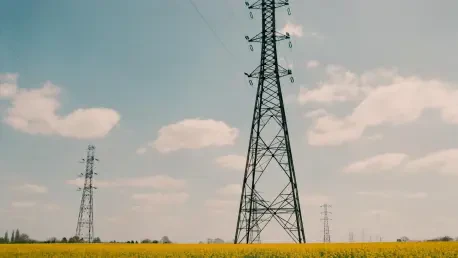Germany’s energy landscape stands as a model of structured governance, particularly in the regulation of Transmission System Operators (TSOs), which are vital to the nation’s electricity and gas grid management. These entities bear the immense responsibility of ensuring a stable energy supply while navigating the complexities of an ongoing energy transition. As the country accelerates toward renewable energy integration and ambitious climate targets, the regulatory framework guiding TSOs has become a critical focal point. This system not only ensures operational efficiency but also strives for fairness and sustainability, adapting to both national priorities and European mandates. The intricate balance of legal oversight, economic incentives, and infrastructural demands shapes how TSOs function, making this a compelling area of study for energy stakeholders and investors alike. Understanding these mechanisms reveals how Germany maintains a robust energy backbone amidst rapid sector evolution.
Legal and Operational Oversight
Core Regulatory Principles
The foundation of TSO regulation in Germany rests on the Energy Industry Act (EnWG), a comprehensive legal framework that dictates how these operators manage critical grid infrastructure. Overseen by the Federal Network Agency (BNetzA), TSOs must adhere to stringent guidelines ensuring non-discriminatory access to the grid for all market participants. This principle of fairness prevents any undue advantage, fostering a competitive energy market. Beyond access, the BNetzA enforces rigorous cost reviews to align network usage fees with economic efficiency targets. Incentive regulations play a key role here, designed to optimize both capital investments and operational expenditures. This dual focus ensures that TSOs can maintain profitability without imposing excessive costs on consumers, creating a delicate yet necessary equilibrium in the energy sector’s financial ecosystem.
Another critical aspect of regulatory oversight is the emphasis on operational standards that TSOs must meet to guarantee grid reliability. The BNetzA not only approves tariffs but also monitors compliance with technical and safety requirements, ensuring the grid remains robust even under stress. This is particularly vital as Germany’s energy mix shifts toward renewables, which introduce variability and new challenges to grid stability. The return on equity for network operators, currently set at 5.07% for new installations and 3.51% for existing ones during the ongoing regulatory periods, reflects a balanced approach. These rates, recently upheld by a Federal Court of Justice ruling, aim to attract investment while safeguarding affordability. Such judicial validation reinforces confidence in the regulatory system’s stability, providing a predictable environment for operators navigating complex market dynamics.
Enforcement and Compliance Mechanisms
Enforcement by the BNetzA extends beyond mere tariff approval to active monitoring of TSO performance across multiple dimensions. This includes ensuring that operators meet service quality benchmarks and adhere to environmental standards, which are increasingly stringent due to national climate goals. Non-compliance can result in penalties, incentivizing TSOs to prioritize efficiency and innovation in their operations. The regulatory body also facilitates dispute resolution between TSOs and other market players, maintaining a neutral stance to uphold fairness. This comprehensive oversight ensures that the grid operates as a public utility, prioritizing societal benefit over individual corporate gain, while still allowing room for sustainable business models.
Additionally, the regulatory framework incorporates periodic reviews and adjustments to keep pace with technological advancements and market shifts. For instance, the integration of smart grid technologies requires updated compliance measures to address cybersecurity risks and data management challenges. The BNetzA collaborates with industry stakeholders to refine these standards, ensuring they remain relevant and effective. This adaptive approach not only mitigates risks but also supports TSOs in modernizing infrastructure without facing undue regulatory burdens. By fostering dialogue between regulators and operators, Germany’s system creates a responsive environment that can address emerging issues while maintaining the core principles of equity and efficiency in grid management.
Grid Tariff Reforms and Future Challenges
The AgNes Initiative
A transformative shift in Germany’s grid tariff system is on the horizon with the AgNes determination procedure, launched by the BNetzA in May of the current year and slated for implementation by 2029. This initiative emerges as a response to the expiration of the current Electricity Grid Tariff Ordinance and aligns with European legal mandates for independent regulatory rule-making, free from parliamentary or ministerial interference. AgNes seeks to overhaul cost allocation methodologies, ensuring they reflect the realities of rising grid investments and the growing need for flexibility in an energy system increasingly reliant on decentralized renewable sources. A key discussion point is the potential for renewable energy operators to shoulder a larger portion of grid costs, a move that could significantly alter electricity pricing structures and subsidy frameworks for a more balanced financial load.
The implications of AgNes extend beyond mere cost distribution, aiming to foster a sustainable energy infrastructure capable of supporting Germany’s long-term climate objectives. By rethinking tariff systems, the initiative addresses the financial pressures on end consumers while encouraging investment in grid modernization. This reform is particularly crucial as the integration of wind and solar power demands greater grid capacity and resilience, often at a high cost. The potential shift in cost-sharing could also incentivize renewable operators to optimize their feed-in strategies, aligning their operations more closely with grid stability needs. As AgNes progresses through consultation phases, it represents a forward-thinking effort to reconcile economic fairness with the technical demands of a rapidly evolving energy landscape, setting a precedent for regulatory innovation.
Adapting to Energy Transition Demands
The energy transition poses unprecedented challenges for TSO regulation, necessitating continuous adaptation to accommodate a higher share of renewable energy in the grid. Germany’s ambitious targets for carbon neutrality require substantial grid expansion and upgrades, pushing regulators to prioritize infrastructure investments without compromising affordability. This dynamic environment demands that tariff reforms like AgNes remain flexible enough to address unforeseen technical or economic hurdles. The focus is on ensuring security of supply while integrating variable energy sources, a task that requires not only financial mechanisms but also policy alignment with broader European climate goals, shaping a cohesive strategy across borders.
Moreover, the regulatory framework must grapple with the digitalization of the energy sector, which introduces both opportunities and complexities for TSOs. Smart grids and advanced metering systems are becoming integral to managing decentralized energy flows, but they also require updated tariff structures to account for new operational costs. Regulators are tasked with balancing these technological advancements with consumer protection, ensuring that digital investments translate into tangible benefits like improved efficiency rather than added expenses. As the energy transition accelerates, Germany’s ability to adapt its regulatory tools to these multifaceted challenges will determine the resilience and sustainability of its grid infrastructure, paving the way for a cleaner energy future.
Investment Opportunities in the Transmission Grid
Attractiveness for Institutional Investors
Germany’s transmission grid presents a uniquely appealing opportunity for institutional investors, largely due to its status as a natural monopoly with regulated revenues that minimize market risk. Backed by strong government support and characterized by low default risk, the grid offers stable, predictable returns that are particularly attractive in an era of economic uncertainty. The immense investment needs—estimated at over $300 billion by 2045—driven by the energy transition, create a long-term growth trajectory that few other sectors can match. This demand for capital to expand and modernize infrastructure, coupled with potential increases in return on equity, positions the grid as a prime target for investors seeking secure, sustained yields in a critical industry.
Further enhancing its allure, the transmission grid benefits from a political landscape that prioritizes energy security and sustainability, ensuring consistent backing for infrastructure projects. Regulated grid fees provide a reliable revenue stream, insulated from the volatility often seen in competitive markets. This stability is a key draw for pension funds and other institutional players looking to allocate capital to low-risk, high-impact assets. Additionally, the ongoing push for renewable integration means that investments in the grid are not just financially sound but also align with global environmental priorities, offering a dual appeal of profitability and purpose. As capital markets increasingly value sustainable investments, Germany’s grid stands out as a cornerstone opportunity.
Influence of European Law and Policy Trends
European law plays an increasingly significant role in shaping Germany’s regulatory environment for TSOs, as seen in initiatives like AgNes that push for independent frameworks detached from national political influence. This alignment with EU directives ensures a harmonized approach to energy policy, reducing regulatory unpredictability for investors eyeing cross-border opportunities. The emphasis on sustainability and grid modernization, driven by Europe-wide climate policies, creates a consistent demand for capital investment in transmission infrastructure. This convergence of legal and policy trends fosters a stable, forward-looking environment where TSOs can plan long-term projects with confidence, knowing that regulatory shifts are guided by shared continental goals.
Another dimension of European influence is the encouragement of digitalization within the energy sector, which impacts investment considerations for the grid. EU policies promoting smart grid technologies and data-driven energy management systems necessitate significant upgrades, opening new avenues for investor involvement. These advancements, while costly, promise enhanced grid efficiency and reliability, ultimately benefiting both operators and investors through improved performance metrics. The regulatory push for reduced complexity and greater predictability, aligned with European standards, further solidifies the grid’s attractiveness. As Germany continues to integrate these broader policy trends, the transmission grid remains a low-risk, high-potential asset class, poised to support the continent’s transition to a cleaner, more interconnected energy future.
Reflecting on Regulatory Milestones
Looking back, the journey of regulating Transmission System Operators in Germany showcases a remarkable blend of strategic oversight and adaptive policy-making. The robust framework established under the Energy Industry Act, coupled with the vigilant enforcement by the BNetzA, has laid a solid foundation for grid reliability and fairness. Reforms like the AgNes initiative demonstrate a proactive stance in addressing future tariff challenges, while the investment landscape flourishes under the promise of stable returns and government support. For those eyeing the next steps, stakeholders should focus on engaging with upcoming regulatory consultations to shape tariff reforms and explore innovative financing models for grid expansion. Monitoring European policy developments will also be crucial, as they continue to influence national strategies. Ultimately, collaboration between regulators, operators, and investors will drive the grid’s evolution, ensuring it remains a resilient pillar of Germany’s sustainable energy ambitions.









